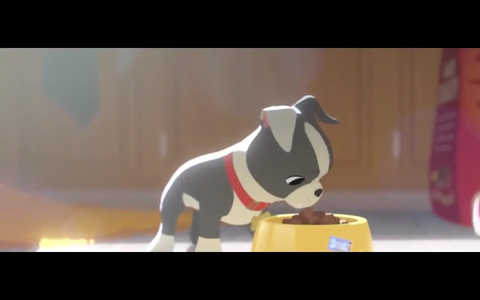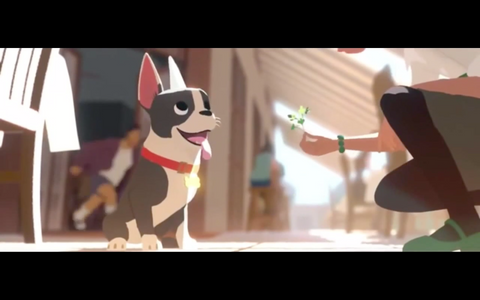Short Film Review: ‘Feast’
- Charlotte Chapple
- Sep 22, 2019
- 4 min read
Directed by Patrick Osborne and produced by Walt Disney Animation Studios, Feastis a computer animated, romantic comedy short film.Although there are elements of rom-com,the short 6, nearly 7-minute filmdoes not focus much on the couple featured in the storyline, rather the protagonist of the story is the dog Winston. The events that unfold within the story revolve around Winston as he manages to reunite the couple after they break up and is even the ring bearer at the wedding.
Without giving to much away, the storyline is fundamentally the same as Paperman or even Pixar’s The Blue Umbrella—boy meets girl, boy loses girl, boy gets girl again. Osborne’s skilful directorial choices avoid soppy sentimentality and expand the scope of this time-tested tale with a willingness to push cinematic language beyond the usual tendencies of Hollywood animated filmmaking. Osborne employs a unique point of view, showing us the world from the shallow depth of field perspective of the owner’s dog, Winston, and makes striking use of quick-cuts and time compression techniques. The narrative fragmentation lends the film a contemporary feeling that evokes the eye-blink editing of a Vine or Instagram video.
Towards the beginning of the film, the unnamed puppy is represented as homeless, with no ID collar and searching for food. Aspects of Mise en Scène such as lighting, suggests to the audience how the puppy is hopeless. The gloomy and overcast lighting represents a solemn feeling, until the shot is lighted and a human hand enters the shot offering food to the puppy. This change in lighting therefore signifies a glint of hope for the Puppy as he accepts the man’s affection. The man then takes the puppy home and the audience follows his growth watching the animal have its tea every night. Food plays a key role in the film. As Winston grows his meals begin to change, from simple dog food that satisfied him during the first scene finally progressing to food essentially made and eaten by humans. As the narrative progresses the dog shows more and more dissatisfaction with the meals he is given showing how easily and quickly individuals get used to and then tire of things that would be taken for as a luxury by someone less fortunate than themselves. The narrative is linear however, not continuous; the audience follows Winston at meal times and therefore is carried through his stages of growth at through lengths of time. The editing also helps develop a smooth continuity of the narrative as new scenes are established through Winston dropping on the ground or running out of shot onto the next one with smooth faded transitions that don’t distract from the story. The progression of time is emphasized through the transformation of Winston and the change of background.
Camera language and perspective are used throughout the narrative to represent a sense of emotion within a speechless character. Winston is the only character given a formal identity throughout the narrative, however, having the only main character unable to speak would have caused problems in portraying thoughts and feelings to the audience. In order to combat this, camera angles have been used to define emotion. In one shot, Osborne used a low angle in order to show food falling through the air after a table is flipped. In the following shot a high angle represents excitement and satisfaction as Winston can be seen sitting, waiting with his mouth open for the food to fall. Using this sort of body and camera language creates a sense of emotion as it would seem the dog is happily grinning as he knows what is coming.

One thing that really stood out for me, production wise, was how low angled shots are used throughout the storyline. One example is when Winston is eating on the floor, human characters lower legs or hands are sometimes present in the background, and this allows the audience to be on the same level as the protagonist, creating a more personal and intimate connection between the audience and character on the screen. Low angled shots are also used to cut out human characters. The faces of human characters are generally omitted; this is only altered when we see James’ sad expression which triggers Winston to have a moment of realisation. This has been used in older animations for example in Tom and Jerry (1940) where the house keeper’s face is never revealed and is always cut out of the shot. A similar technique is used in this short as the human characters faces are often not focused on or are cut off as the camera focuses on Winston, helping tell the story from his perspective, and ensures the viewers attention remains protagonist.
Overall, I believe Osborne has created something very special and you identify not only with Winston the dog (who should instantly be added to the list of all-time greatest animated dogs), but also what his human owner is going through. It’s a strangely sentimental journey, and one that we can all identify with. ‘Feast’ is an epic journey on a miniature scale; a tremendous story told one bite at a time.
Watch ‘Feast’ here: https://www.filmsshort.com/short-film-pages/feast-patrick-osborne.html#.XYJdLC3Mxo4



















Comments